Airport Extreme (5th Gen) and Time Capsule (4th Gen) Review - Faster WiFi
by Brian Klug on August 5, 2011 10:22 PM EST- Posted in
- Mac
- Airport Extreme
- Time Capsule
- WiFi
Airport Utility and Network
The only remaining thing to go over is the Airport Utility and general network functionality. I’m not going to go into very much detail at all about the network side of things (routing performance, etc.) since honestly nothing has changed here—the board and SoC are the exact same.
To start, all configuration is done through Airport Utility on OS X and Windows. There’s no web-based portal like just about every other attached network device. On all of Apple’s WiFi products, Airport Utility is the exclusive point of configuration. It pops up a list of devices, including unconfigured ones without the need to connect over ethernet. Admittedly that’s a nice touch that makes configuration super easy.
There’s either the choice to have a wizard set everything up, or you can do it manually. The first page is summary, which lists some basic information, status, and high level information. Status mirrors the front panel LED which either glows green or amber depending on whether things are working fine.
For example, when the Time Capsule starts overheating the LED blinks amber and pops up an alert. The utility can also monitor for when problems happen.
The rest of configuration is honestly pretty straightforward. Each of the radios (2.4 and 5GHz) can be set to its own SSID, there are a wide selection of radio modes and the ability to set channels manually. As an aside, if you’re going to set the 5GHz channel manually, select one over 149 to get maximum power and avoid dynamic frequency selection chanels in the US.
There’s honestly everything you’d want from a consumer level router or wireless AP, and a couple of extras like RADIUS server support and guest network creation.
If you run the devices as a router, you can also port forward, configure the DHCP server (including static addresses assigned to specific MACs), and all the usual fixings. That said, some of the options are a bit barebones compared to more enthusiast open source packages, but it gets the job done.
In addition to sharing disks, the Airports can also share printers attached using USB. I’ve experimented around and even a USB hub plugged in with devices attached to it works, so you’re not limited to just a single port.
One of the features Airport Utility has that a lot of other consumer devices don’t is a nice way of viewing the status of attached wireless clients, including a little graph that continually tracks. The utility will show each client MAC address, signal, noise level, rate, and what network mode they’re using. It’s an incredibly useful diagnostic tool that’s honestly a step beyond what Tomato or even DD-WRT report for clients.
The Windows version of Airport Utility looks a bit like a program from the Windows XP days, which is about par but not unforgivable. Everything inside works the same way, except this version forgoes the client signal graph and instead just presents a table with data. You can still do everything else, however.
Update: Our own Saumitra Bhagwat pointed out to me that on iOS 5 Beta, you can actually use an Airport Utility (lite) built into the WiFi settings page to configure a new Airport Extreme or Time Capsule. You have to be in the initial setup state (reset completely to defaults) to see it, but when in range, a "setup an airport base station" window appears, allowing this lite level of configuration. Depending on your existing setup, it'll offer some suggestions as well (for example, as I'm attached to a current Extreme, it offers to extend by default).
Another small but useful thing is that both devices support SNMP, so you can do stuff like track traffic on all the internal interfaces on the device using software like MRTG or Cacti (both of which I’m a huge fan of). There’s even a MIB for how many wireless clients are joined. If you’re not into using SNMP yourself, there’s a simple utility out there called Airport Flow that gives you a per-interface graph and the total number of clients attached.
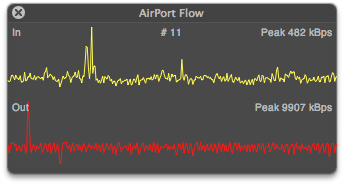
You need to specify the device IP address and what interface to monitor, so you might have to snmpwalk the airport (snmpwalk -c public [ip addy]) and look for the line with each interface name:
IF-MIB::ifDescr.1 = STRING: mgi0IF-MIB::ifDescr.2 = STRING: mgi1IF-MIB::ifDescr.3 = STRING: bwl0IF-MIB::ifDescr.4 = STRING: bwl1IF-MIB::ifDescr.5 = STRING: lo0IF-MIB::ifDescr.6 = STRING: wlan0IF-MIB::ifDescr.7 = STRING: wlan1IF-MIB::ifDescr.8 = STRING: bridge0
But there’s nothing complicated about that.
Honestly, for routing and firewall, the Time Capsule and Airport Extreme get the job done but without much flair or ability to tweak low level things like I’d like to see. I generally use either a pfSense embedded x86 box, WRT54G-TM running Tomato, or a WRT-600 running DD-WRT for NAT routing, firewall, and DHCP myself, just because those options offer a ton of fine grained control over the network side, and then an Airport Extreme for WLAN. That said, the Time Capsule or Airport Extreme can do all of that in one box.


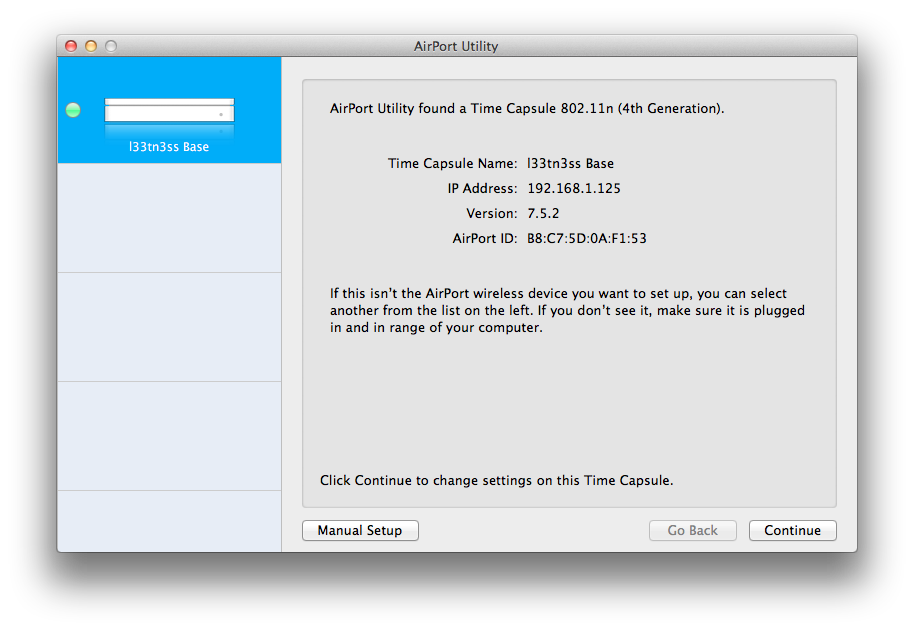
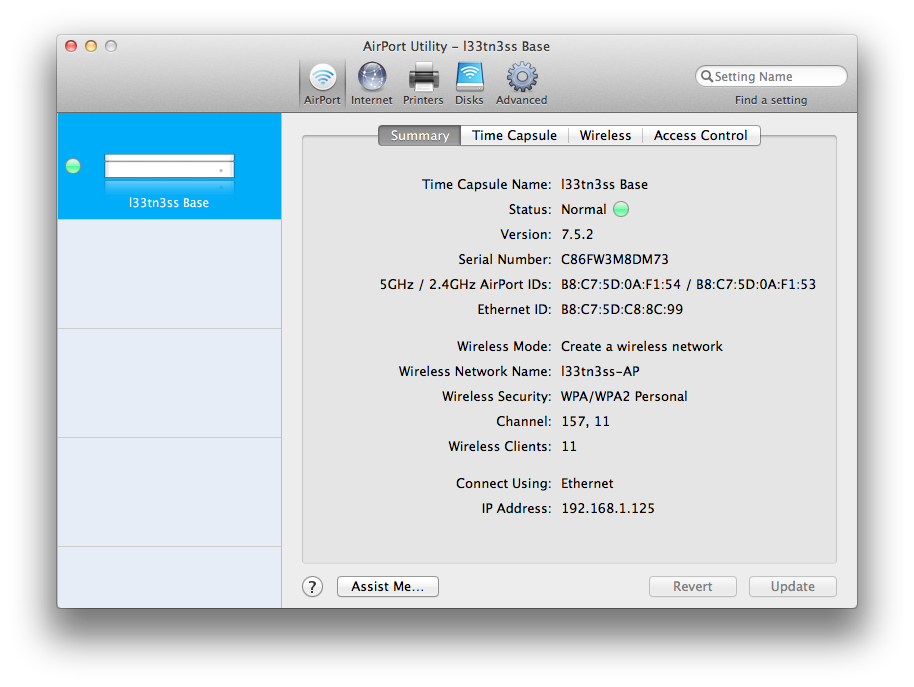
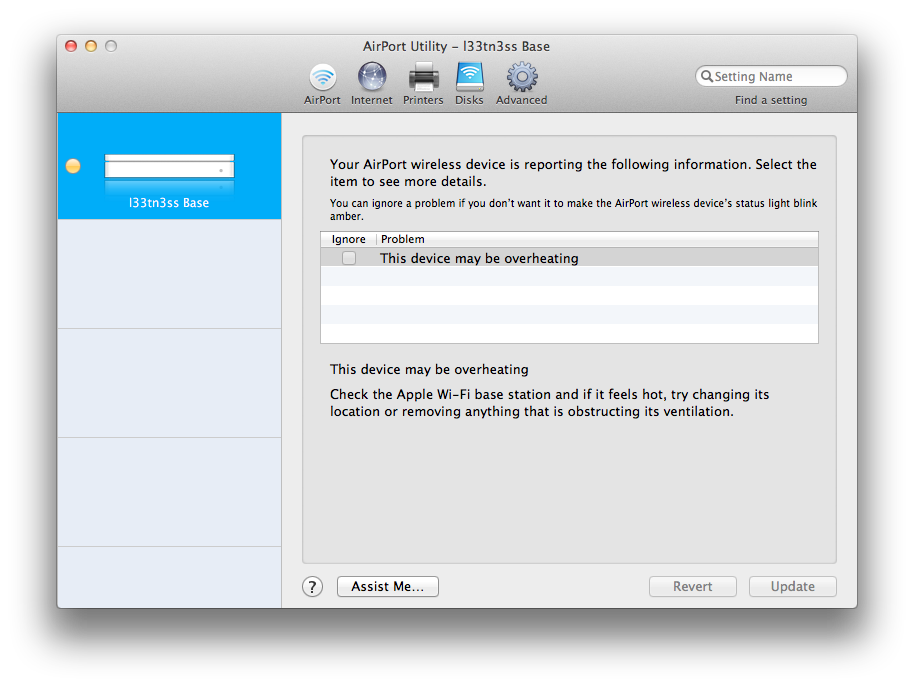
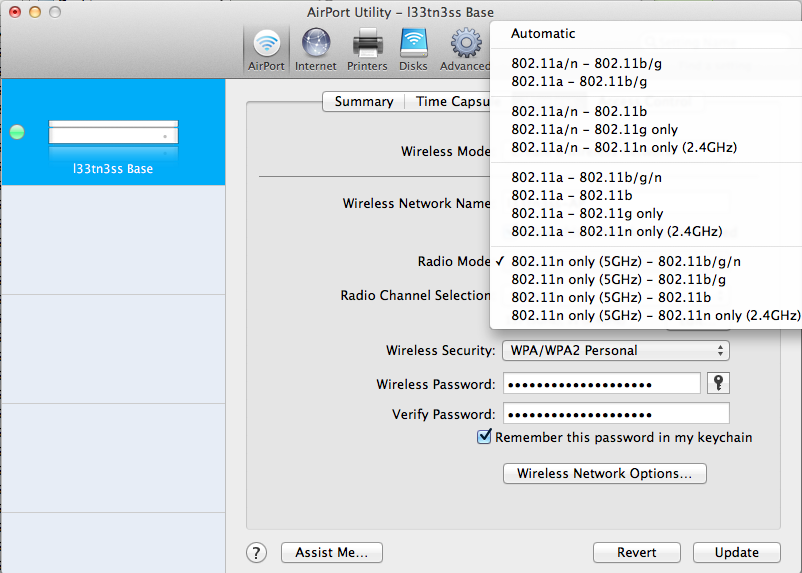
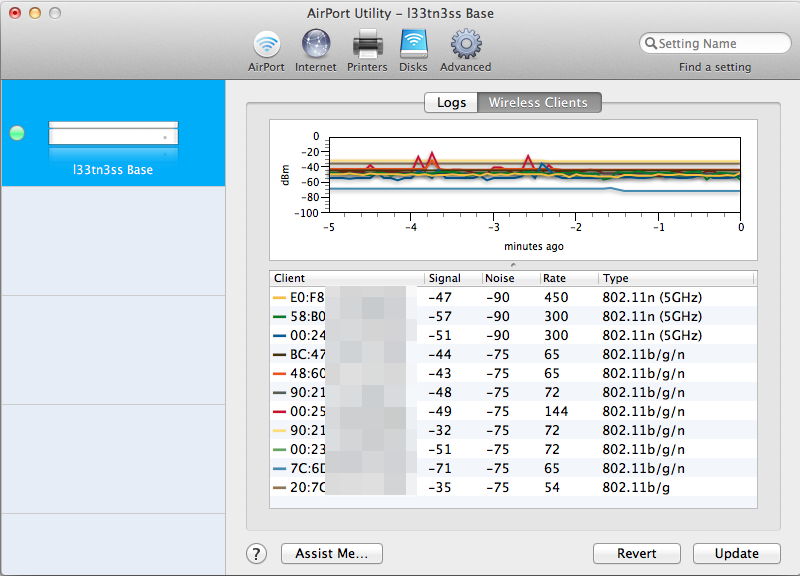


























90 Comments
View All Comments
tipoo - Saturday, August 6, 2011 - link
Oi, I should read slower, heh"There’s a stigma that Apple gear is more expensive, and for the 3TB Time Capsule that may be the case, but the Airport Extreme is actually right near where it should be. Take for comparison the Linksys E4200, which is a 2x3:2 device on 2.4GHz, and 3x3:3 on 5GHz, and also Broadcom based. That device runs for $179.99 and features similar functionality including a USB 2.0 port for sharing devices. At $179.00, the Airport Extreme offers full 3x3:3 on both 2.4 and 5GHz, albeit the E4200 does have considerably more Tx power, which we'll investigate in a forthcoming article."
lowlymarine - Saturday, August 6, 2011 - link
Calling Caviar Green's "server grade" strikes me as galling even for Apple, who are pretty willing to play fast-and-loose with truth in advertising as it is.repoman27 - Saturday, August 6, 2011 - link
This odd bit of nomenclature has been around and much debated since Apple first introduced the Time Capsule. WD Caviar Green drives generally offer the lowest price per GB combined with some of the best performance per watt for a 3.5" spinning disk on the market... Just ask Google how many they currently have deployed. So yes, they are ideal for servers.What isn't "server grade" in the Time Capsule is the utter lack of redundancy within the device itself. The intended usage model for the TC is as a backup device though, so there is redundancy in the overall system, i.e. you never actually store critical data on it, just a backup of critical data, therefore if it fails it's not much of a problem.
solipsism - Saturday, August 6, 2011 - link
Can the Linksys E4200's USB port be used for a printer the way the Time Capsule and AirPort Extreme/Express can?Brian Klug - Saturday, August 6, 2011 - link
I know it can share attached USB Mass Storage devices, but I'm actually not certain about printers. Jarred probably will talk about it in his review soon.-Brian
ThomasA - Saturday, August 6, 2011 - link
Does the AE software offer a means to record data usage? With the 'new' DSL caps set by At&t I'd like to be able to compare my info on usage vs. theirs.Brian Klug - Saturday, August 6, 2011 - link
You could watch the SNMP counters and use one of many software packages (including some big ones like MRTG/Cacti) but that's sort of daunting admittedly. There's nothing in airport utility that will show data use. That's just another thing I leave to Tomato on a WRT54G-TM personally.-Brian
deadshort - Saturday, August 6, 2011 - link
Here's a general suggestion for hardware reviews: could you plug the gizmo under examination into a power meter instead of just the wall and eyeball up some numbers? These days green geeks fret over these matters, especially for 365x24 devices like routers. The badge or spec. numbers are often worthless. Just a thought, thanks.Oh, nice review, BTW. I agree that the recent Apple 802.11 gear is getting boringly reliable and decent, in a good sense. You can't tweak the firewall in quite the gruesome detail I'd like, but the box never needs attention or unplanned restarts. The he.com tunnel works fine, the BSD/Roku/Apple/Sony/Epson clients are happy, there is no drama to upset the non-geeks. Not bad, even for the price.
Brian Klug - Saturday, August 6, 2011 - link
I actually completely forgot to mention my Kill-A-Watt numbers. I don't recall the Time Capsule numbers off the top of my head, I saw a peak power use of 11 watts on the Airport Extreme Gen 4 (while data was being transacted on 2.4 and 5 GHz) and 12 watts on the Gen 5.-Brian
ThomasA - Saturday, August 6, 2011 - link
Yes, I read of MRT/Cacti. Also looked into replacing AE with a Netgear WNDR4000 that offers the data usage meter. I'd prefer the Apple, but must look ahead. Too bad.